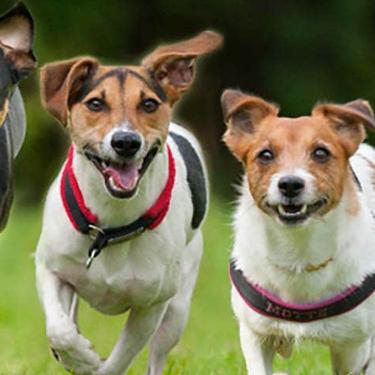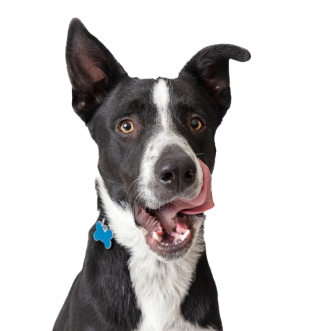
-
Find the right food for your petTake this quiz to see which food may be the best for your furry friend.Find the right food for your petTake this quiz to see which food may be the best for your furry friend.Featured products
 Hill's Science Diet Adult 7+ Senior Vitality Small & Mini Chicken & Rice Recipe Dog Food
Hill's Science Diet Adult 7+ Senior Vitality Small & Mini Chicken & Rice Recipe Dog FoodImproves everyday ability to get up & go
Shop Now Puppy Large Breed Chicken & Brown Rice Recipe
Puppy Large Breed Chicken & Brown Rice RecipeVital nutrients to support 5 essential building blocks for lifelong health
Shop Now Puppy Lamb Meal & Brown Rice Recipe
Puppy Lamb Meal & Brown Rice RecipeVital nutrients to support 5 essential building blocks for lifelong health
Shop NowFeatured products Adult Indoor Chicken Recipe Cat Food
Adult Indoor Chicken Recipe Cat FoodSupports energy level and beautiful fur in indoor cats
Shop Now Adult Sensitive Stomach & Skin Cat Food
Adult Sensitive Stomach & Skin Cat FoodHighly digestible food that is gentle on the stomach. Nourishes skin & promotes lustrous fur.
Shop Now Adult 7+ Chicken Recipe Cat Food
Adult 7+ Chicken Recipe Cat FoodSupports energy level and beautiful fur in mature cats
Shop Now -
Dog
- Dog Tips & Articles
-
Health Category
- Weight
- Food & Environmental Sensitivities
- Urinary
- Digestive
- Joint
- Kidney
-
Life Stage
- Puppy Nutrition
- Adult Nutrition
Cat- Cat Tips & Articles
-
Health Category
- Weight
- Skin & Food Sensitivities
- Urinary
- Digestive
- Kidney
-
Life Stage
- Adult Nutrition
Featured articles Water
WaterDiscover why water is the most important nutrient for your dog or cat to live a healthy life. Find out how much water your pet should consume each day.
Read More Pet Food Storage Tips
Pet Food Storage TipsDiscover how and where to store your dry, as well as canned, dog and cat food. Learn how to find the "best before" dates on all Hill's pet food packaging.
Read More The Incredible Science Behind Your Pet's Microbiome
The Incredible Science Behind Your Pet's MicrobiomeLearn what a pet's microbiome is, how it contributes to your pet's gut & overall health, and why nutrition is important in maintaining healthy microbiomes.
Read More -


Dog science is on the rise as more and more researchers devote their time and resources to understanding the inner workings of how our best friends have evolved to become so intertwined with humanity. From dog biology to dog psychology, we understand more than ever about pups and their behavior. Curious to find answers to what science says about your dog? Keep reading about some of the more fascinating things we've uncovered.
Why Do Dogs Sleep So Much?
The amount of time a dog spends sleeping depends on many factors, including his age, size, breed, health and activity level. All dogs require significantly more sleep than humans, which has to do with the amount of REM sleep that dogs get. While humans spend about 25 percent of their sleep in REM cycles, which is the deepest and most restful stage of sleep, only about 10 percent of a doggy nap is spent in REM sleep. This means that they need to sleep longer to make up for the imbalance.
What Are Dogs Saying When They Bark?
Although dogs bark for a variety of reasons, biologists formerly thought that their barking didn't change depending on the message. More recently, however, research into the biology of a dog has discovered that dogs have elasticity in their vocal chords, giving them the ability to slightly alter the sound of their barks to convey different meanings, says Scientific American.
Spectrographic images of dog barks have shown differences in timing, pitch and amplitude, all of which vary according to context. The same is true of growling. While it's not yet clear to researchers what these different barks and growls mean, experiments have shown that dogs react differently to other dogs' vocalizations depending on the context. For example, scientists recorded a dog growling over food and growling at a stranger. When they played back the "food growl" while offering another dog a treat, dogs were more hesitant to accept it than when they heard the "stranger growl." Other experiments showed that dogs and people are more likely to react to a dog's "stranger bark" than to other kinds of barking. More dog science research is needed to decode every woof and growl, but it's becoming clear that there is a more complex communication element to a dog's barking — they're not just doing it for fun.
How Fast Can Dogs Run?
How fast a dog can run depends on the individual dog. Running speed is largely dependent on size, body shape, and leg length, as well as the age, health and physical condition. The greyhound averages about 45 miles per hour as the world's fastest dog, with the fastest ever member of this breed clocked at 50.5 miles per hour, says Wag!. While streamlined greyhounds and other fast breeds, such as whippets and Afghan hounds, appear to have been designed for speed, all dogs have the ability to make their bodies more aerodynamic when they run, either by flattening their ears to decrease wind resistance or pushing them back to avoid getting tripped up.
The way dogs move their legs also changes when they run. A walking dog moves their right legs and left legs together, while a running dog leaps with their front legs and back legs paired, allowing for more speed.
How High Can Dogs Jump?
For some dogs, the ability to hop up on a couch is no amazing feat; for others stairs may be required to snuggle with you in your favorite chair; and still for other dogs containing them in fenced yards can be a challenge because of their jumping ability. Similar to a dog's running ability, a dog's jumping ability depends largely on their size, strength, age, health and body condition. It has been reported that the highest jumping dogs can clear 6 feet, but what might be more impressive are the small breeds that can jump multiple times their body height. Another component of dog's jumping is how far they can leap. Common in dock-diving competitions, dogs are trained to run and leap in the water to see how far they can make it — some achieving leaps near 30 feet The Labrador Site reports.
How Well Can Dogs See?
A dog's eyes are incredible and can see things that you and I can't see. However, a dog's vision isn't necessarily better than a human's. According to Veterinary Vision, a dog's eyes are positioned on the side of his head which results in greater peripheral vision, however their visual acuity (or their ability to focus on objects) is only about 20 to 40 percent of that of a human. This means that what a dog can distinguish as an object at 20 feet, a human with 20/20 vision could distinguish it at 90 feet. For this reason, dog's rely on their other senses a great deal to help them navigate the world.


Tasty Tips
How Good is a Dog's Hearing Really?
A dog's hearing is no myth, in fact, it's an impressive biological advantage that has helped them for thousands of years. According to Petful, a dog can hear a sound up to four times further away than humans. Dogs have the ability to use their ears independently and change the direction for which they are listening, which helps them zero in on the sound they are listening for. This is done because they have 18 muscles in their ears (three times as many in the human ear). Dogs also have the ability to hear different frequencies, which is why things like dog whistles can affect them so much, even when you don't hear anything. Lastly, dogs also have the ability to practice selective hearing similar to humans, so when you're calling your dog in from the yard and it seems like they're ignoring you, there's a good chance that they are.
Why Do Dogs Get So Excited to See Us?

When you come home at the end of a long day — or even after only an hour or two — chances are your dog is over the moon with happiness and excitement. Every! Single! Time! Dogs' over-the-top response to being reunited with their humans is one of the things we love so much about them. But why do they get so excited?
There are three key factors involved, says io9. When studying brain scans of dogs exposed to certain smells, canine behavioral researchers found that the scent of a familiar human triggered the reward centers of the brain in a way that no other scent accomplished, suggesting not only that dogs know the difference between humans and other dogs, but that dogs genuinely love spending time with their humans.
Another study used a cognitive experiment designed for children seeing their mothers after an absence to measure the response of dogs reuniting with their owners, and found that the response is very similar. It's important to remember that dogs are social animals that don't like to be left alone. To them, our return signals relief from loneliness. Add all of that up, and it's no wonder that dogs can't contain their excitement to see their favorite people.
Why Are There So Many Different Kinds of Dogs?
Dogs are one of the most diverse species on the planet. Britain's The Kennel Club recognizes a whopping 218 distinct dog breeds and that doesn't even count all the regional variations, designer cross-breeds, mixed-breeds and happy mystery mutts out there.
With all of their diversity in color, shape, size and temperament, scientists believe that dogs started diverging genetically from wolves around 27,000 years ago. You can thank those ancient hunter-gatherer pet dominant genes and manipulating their expression in subsequent dog generations.
While this practice has gone on for almost as long as dogs have been domesticated, selective dog breeding exploded during the 19th century as people began creating different breeds for aesthetic reasons and novelty's sake rather than because certain traits were more useful for hunting or herding. As this practice continues today, the number of dog breeds and the diversity among the species continues to increase.
There's no doubt that dogs are special, and so is the bond we share with them. As the field of dog science continues to grow, we're continuing to discover more and more about our favorite furry companions. But there's one thing we don't need to rely on science to tell us, and that's how awesome our dogs are — each and every one.


Jean Marie Bauhaus is a pet parent, pet blogger, and novelist from Tulsa, Oklahoma, where she usually writes under the supervision of a lapful of fur babies.
Related products

Improves everyday ability to get up & go

Vital nutrients to support 5 essential building blocks for lifelong health

Improves Everyday Ability to Get Up & Go

Vital nutrients to support 5 essential building blocks for lifelong health
Related articles

Understand the role that Omega-6 and Omega-3 fatty acids play in your dog's overall health, and how you can ensure they are getting enough.

Learn basic steps & precautions for treating a cut on your dog, including what you can put on the cut, and when you should take them to the vet.

Discover fun and engaging games and other ways to help your dog exercise, keeping him happy and healthy.

Learn how to stop your dog from begging at the dinner table, and understand how it can help contribute to his health.

Put your dog on a diet without them knowing
Our low calorie formula helps you control your dog's weight. It's packed with high-quality protein for building lean muscles, and made with purposeful ingredients for a flavorful, nutritious meal. Clinically proven antioxidants, Vitamin C+E, help promote a healthy immune system.
Put your dog on a diet without them knowing
Our low calorie formula helps you control your dog's weight. It's packed with high-quality protein for building lean muscles, and made with purposeful ingredients for a flavorful, nutritious meal. Clinically proven antioxidants, Vitamin C+E, help promote a healthy immune system.

